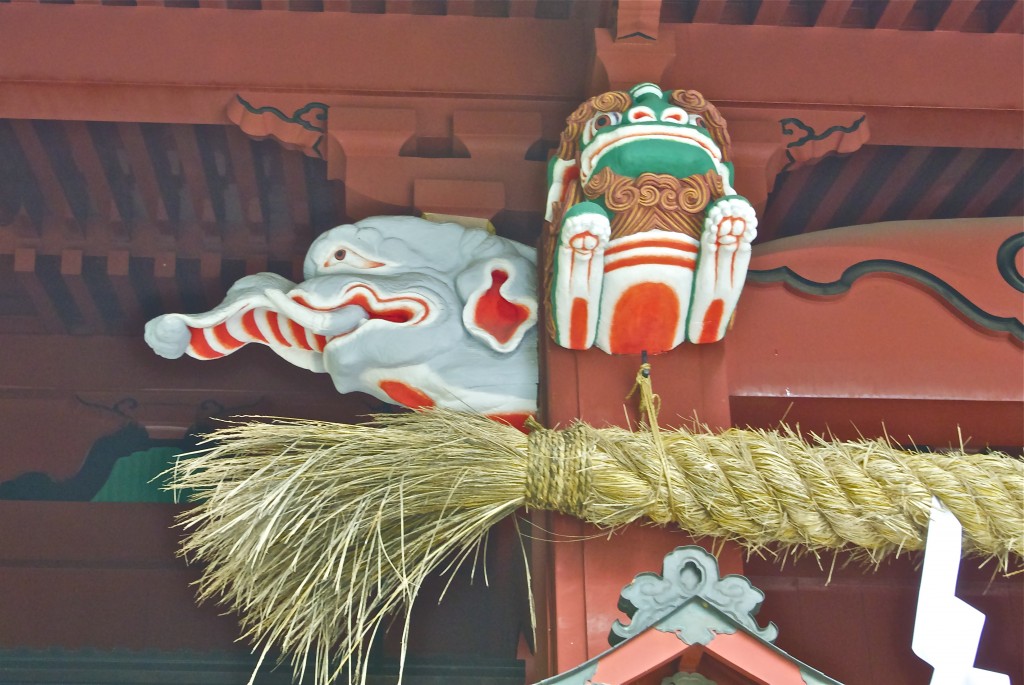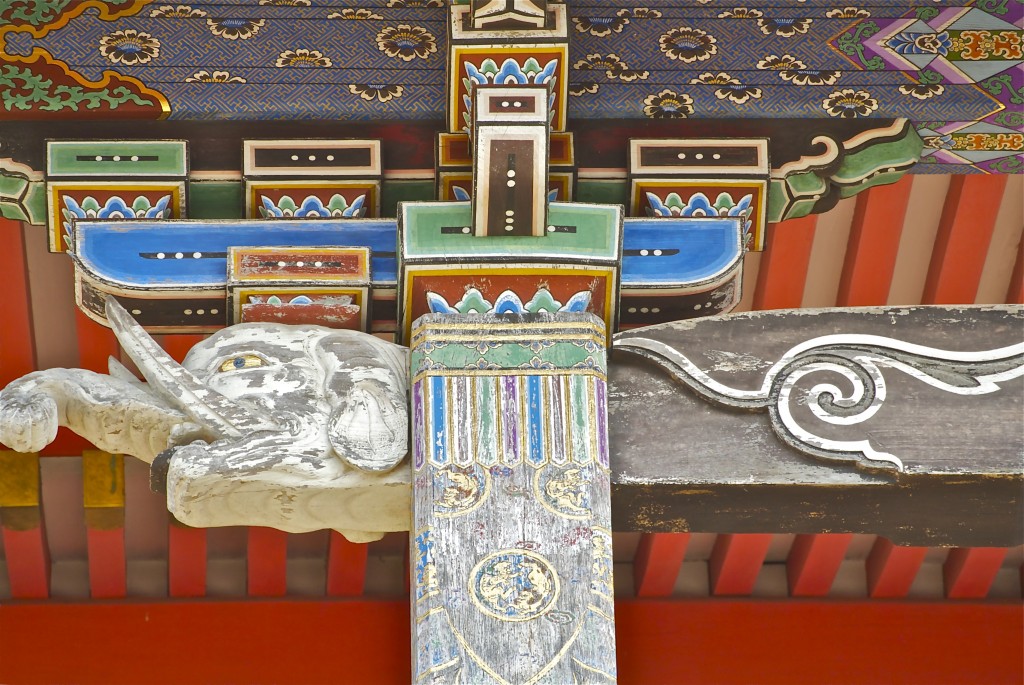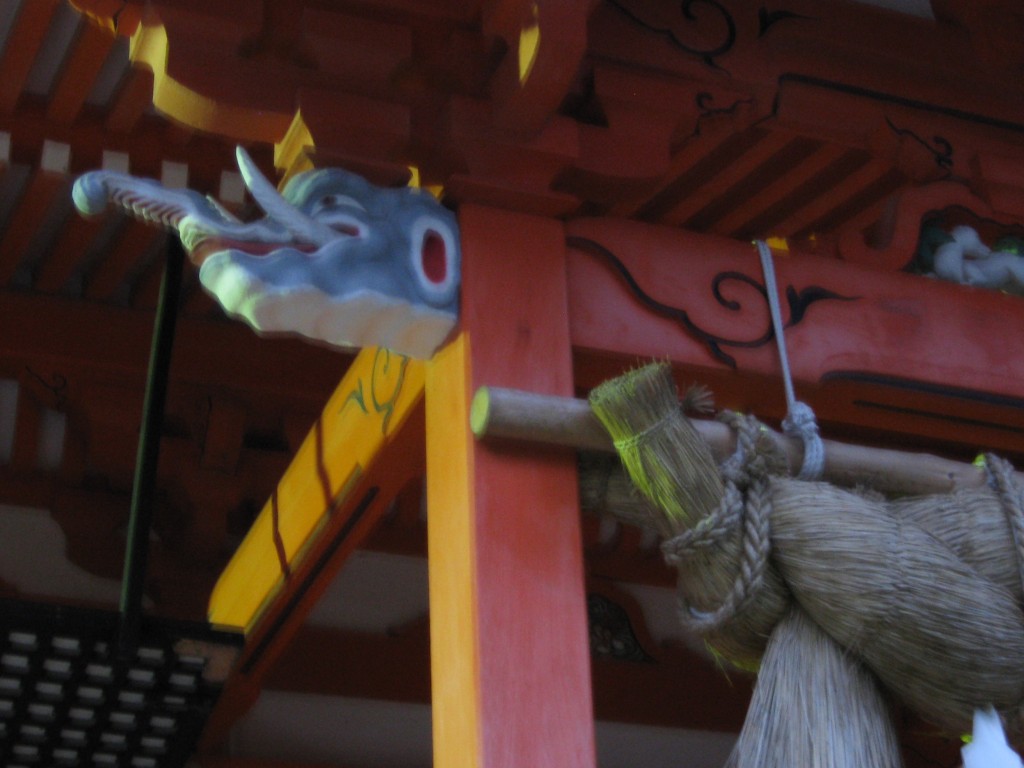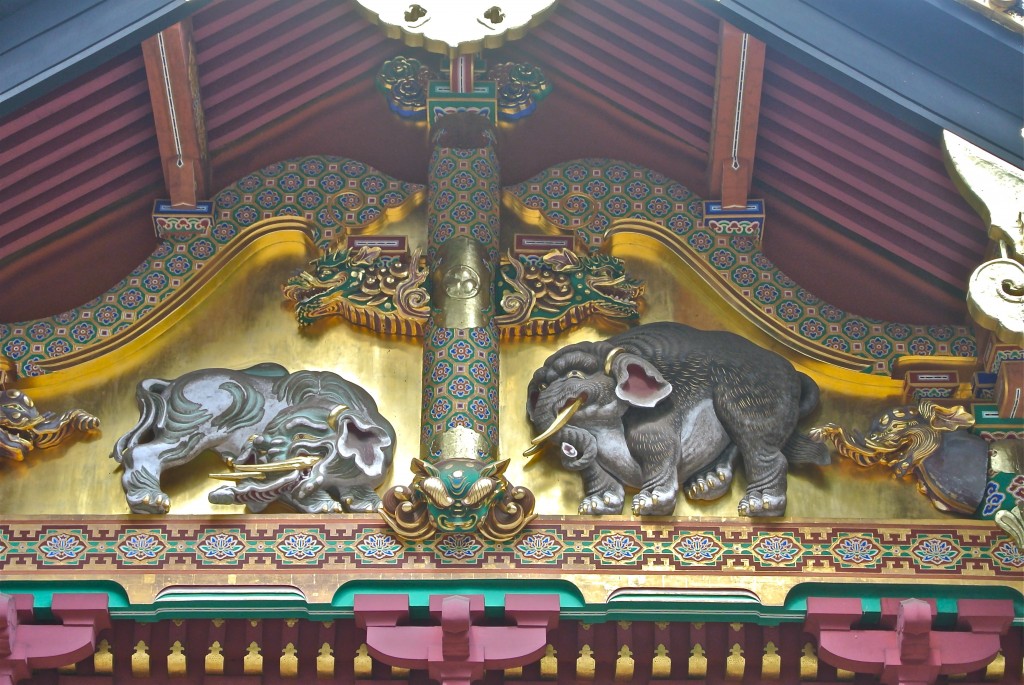
Baku detail on the honden at Yasaka Jinja in Kyoto
The first time I saw one, I thought it was an elephant! Now when I see it, I feel happy to know it will eat my nightmares….
Welcome to the imaginative world of the ‘baku’, courtesy of the Ancient Origins website, a fascinating trove of miscellenia which delves into the mysterious past.
*****************************************
Baku: The Legend of the Dream Eater
By M R Reese 1 DECEMBER, 2014
The baku, otherwise known as the ‘dream eater’, is a mythological being or spirit in Chinese and Japanese folklore which is said to devour nightmares. The baku cannot be summoned without caution, however, as ancient legends say that if the baku is not satisfied after consuming the nightmare, he may also devour one’s hopes and dreams.
Tales of the baku devouring nightmares originated in Chinese folklore, and later appeared in Japanese folklore between the 14th and 15th centuries, in what was known as the Muromachi period. While the baku is a spiritual being, it has a well-defined appearance. It takes on the form of a chimera – a mythological beast comprised of a variety of parts from other animals. The baku is typically depicted with a bear’s body, an elephant’s nose, a tiger’s feet, an oxen tail, and rhinoceros eyes.

Baku detail at the entrance gate to Kiyomizu temple in Kyoto
According to legend, the baku was created by the spare pieces that were left over when the gods finished creating all other animals. Descriptions and beliefs in the baku have changed throughout the years. In ancient Chinese legends, the baku was an animal that was hunted for its pelt. Whomever killed a baku would use a blanket made from the pelt as a talisman, or an object with magical powers, which would protect them from evil spirits. This practice evolved into one where a pelt was not necessary, and the display of a baku image over the bed would repel evil spirits.
It wasn’t until the baku legends made their way to Japan that the figure was viewed as a dream-eater. With this transition, the stories of baku became consistent, and he has continued to be viewed as a dream-eater to this day. Legend has it, that a person who wakes up from a bad dream can call out to baku. A child having a nightmare in Japan will wake up and repeat three times “Baku-san, come eat my dream. Baku-san, come eat my dream. Baku-san, come eat my dream.”
Legends say that the baku will come into the child’s room and devour the bad dream, allowing the child to go back to sleep peacefully. However, calling to the baku must be done sparingly, because if he remains hungry after eating one’s nightmare, he may also devour their hopes and desires as well, leaving them to live an empty life. The baku can also be summoned for protection from bad dreams prior to falling asleep at night. To this day, it remains common for Japanese children to keep a baku talisman at their bedside.
Today you can find several modern representations of the baku. Occasionally, a baku is shown in a form that represents a tapir, as opposed to the traditional chimera form. In 1984, Oshii Mamoru’s animated film, ‘Beautiful Dreamer’, depicted a baku as a tapir. Later, a baku took on a tapir-like form in Pokemon in the Drowzee/ Hypno and Munna/ Musharna characters, and the popular Digimon (virtual pet monster) also has a character called Bakumon or Tapirmon, that bears similarity to the baku.
The idea of being able to summon a baku to prevent or end a nightmare is one that can be understood across various cultures and different time periods, and the use of talismans or symbols of protection for sleep are a common thread seen throughout history. The baku has remained a steady figure in nightmare prevention throughout the years, in both chimera and tapir form, and it is likely to remain a figure for many years to come.

Baku at Hinomisaki Shrine in Shimane Prefecture

There are baku, elephants and just about any other creature you could imagine in the wonderful wonderland of Tosho-gu at Nikko

Leave a Reply